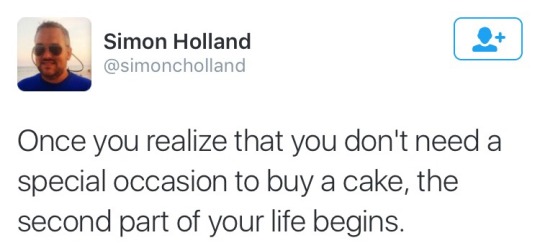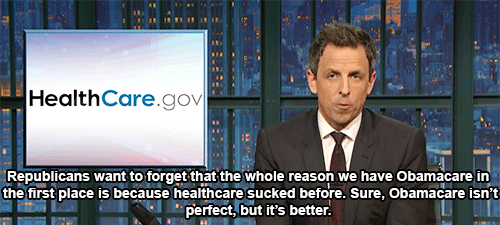A perfect power struggle between MEDICAL(!!) school and social life.
Don't wanna be here? Send us removal request.
Text
I think next thursday is gonna be the best day of my entire life tbh
957K notes
·
View notes
Text
Found out I've been using the wrong media for my cells ALL SUMMER LONG. Research is cruel and unforgiving and constantly reminds me why I didn't pursue a PhD.

1 note
·
View note
Text
New Beginnings
While I did not end up getting into the MD school of my dreams, I did get into a very good DO school and will be matriculating there in August 2017! I am slightly disappointed, yet also excited to see where this new journey will take me. Now to look for apartments...
8 notes
·
View notes
Text
Most bang-for-buck things every intern should know before starting inpatient wards
Source. A collection of Meddit resources and advice on what bread-and-butter topics interns would most benefit from brushing up on/memorizing prior to the beginning of their internship. 1) Fluids. How and when to use them, dosage, timing and other pearls.
Review of fluids (not how to use them per se) by Dr. Strong /u/ericstrong
Maintenance Intravenous Fluids in Acutely Ill Patients - NEJM.
Pretty thorough review of fluid management on openanesthesia.org
2) Nausea. When to treat, how to treat and at what dose.
3) Standard pn orders: pain killers, sleep aids and antiemetics aka how to reduce nighttime calls from nurses by 25%
4) “Reflex” antibiotic choice for routine inpatient infections.
http://www.bpac.org.nz/Supplement/2013/July/antibiotics-guide.aspx /u/ChristianM and /u/ive_been_up_allnight
5) Initial work-up and treatment of dyspnea. (more realistic to approach by symptoms as, unfortunately, you first have to diagnose whats wrong. E.g. heart failure, pulmonary edema, embolism, COPD, pneumonia).
6) Initial work-up and treatment of oliguria/anuria.
7) A sensible initial approach to suspected ileus.
8) Blood. When, how, why to replace.
9) Pain. Optimal management without inducing narcosis.
Managing cancer pain: Frequently asked questions: CCJM
10) Potassium. When, why and how to shift or replace.
A review on both potassium and sodium disorders by Dr. Strong /u/ericstrong (Not reposted in 12) hyponatremia but applies there as well) https://www.youtube.com/playlist?list=PLYojB5NEEakXVIAapcSEleP4doUdHVtld
11) Hyponatremia. Most common electrolyte disturbance, commonly mismanaged.
12) Resuscitation aka commit the ACLS algorithms to memory.
Current ACLS guidelines. https://www.acls.net/aclsalg.htm
Would love a video series, interactive cases etc.
13) Basic EKG interpretation.
Whole EKG video courses
A whole free youtube EKG video review course by meddit’s own u/ericstrong
An alternative EKG course that takes you through all the basics. This however has no free version and costs 96$ a year. The quality is amazing. Here are 6 basic sample videos on youtube. The paid course is available on http://www.ecgteacher.com/
I have to admit I haven’t used this course personally but his free youtube videos are on-point and he seems like a good teacher. Also behind paywall. Free youtube samples are here. The full course can be found here https://www.ecgacademy.com.
EKG video cases
Amazing case-of-the-week emergency medicine EKG videos on youtube by Dr. Amal Mattu
– If you like Dr. Mattu’s cases (and you most certainly will) he is still posting every single week on his new site https://ecgweekly.com. It costs 4 starbucks coffees a year and is going to save someones life.
Practice EKGs with answers
Watching videos isn’t enough, you still have to grind out EKGs to keep your game strong. Visit http://ecgmadesimple.com and http://ecg.bidmc.harvard.edu/maven/mavenmain.asp for this.
EKG blogs
I recommend signing up for some kind of RSS feed (e.g. https://feedly.com/) and subscribing to the following EKG blogs:
http://hqmeded-ecg.blogspot.is (Dr. Smiths ECG blog)
http://www.ems12lead.com
http://ecg-interpretation.blogspot.is
http://jhcedecg.blogspot.is
EKG resource libraries
Life in the fastlane has a nice resource to look up a specific EKG finding, criteria or concept.
http://www.practicalclinicalskills.com/ekg.aspx /u/collidge
14) Know when to order ABGs and how to interpret them.
Almost too detailed video lecture series on ABGs and how to interpret them by Dr. Eric Strong (/u/ericstrong)
Practice makes perfect. ABG interpretation generator. https://abg.ninja/abg
Bonus 15) Basic CXR interpretation
CXR video lecture course
Again, Dr. Eric Strong has an excellent video course for free on youtube
Step-by-step guides to basic CXR interpretation
The Radiology Assistant: Chest X-ray - Basic interpretation
Radiology Masterclass step-by-step basic CXR
University of Virginia’s step-by-step basic CXR
All inclusive resources
The art and science of thoracic imaging All inclusive resource for all things thoracic! Jokes aside amazing resource.
UPenns CXR learning website
Loyola Universities excellent CXR Atlas Most outdated look but amazing content.
Checklist approach to CXR
Bonus 16) Overnight o-shit-what’s-that Head CT interpretation
Midnight radiology: Emergency CT of the head
University of Virginia’s guide to the Head CT
11K notes
·
View notes
Photo

Cold emailing professors about joining their research lab like
0 notes
Text
First they came for the scientists…
And the National Parks Services said, “lol, no” and went rogue and we were all like, “I was not expecting the park rangers to lead the resistance, none of the dystopian novels I read prepared me for this but cool.”
103K notes
·
View notes
Conversation
me: say it— i need to hear those three words
library database: Full Text Online
me, shedding tears: i love you too
312K notes
·
View notes
Text
6 mistakes to avoid on the USMLE Step 1
While there are many ways to succeed in medical school, the students who fail to reach their target score on the USMLE Step 1 tend to commit the same mistakes. At Memorang we work closely with tutoring centers from top medical schools around the country, and wanted to share solid advice compiled from students, tutors, faculty, and our own Step 1 experiences.
What are the most common mistakes students make?
Adding too many resources.
Passive learning instead of active quizzing.
Not using QBanks correctly.
Not knowing how and when to use different resources.
Study Fatigue.
Test-day anxiety.

Mistake #1: Adding too many resources
What is the point of wasting time with additional resources if you haven’t mastered what’s already in front of you? As a thought experiment, suppose that you performed reasonably well in your coursework and knew 100.0% of every detail from First Aid, Pathoma, and the UWorld QBank. What score would you reasonably expect to receive? You would be hard-pressed to find any student that would expect anything less than 250 and many would claim 260.

These are high-yield review resources of the topics and facts most likely to come up on your exam and are meant to be used alongside your coursework long in advance of your Step 1.
First Aid for the USMLE Step 1 ($27-$45) - The bible of the preclinical years. You should be reading and annotating this book alongside your regular coursework from the beginning of medical school. By the time you reach your dedicated study period for boards, you should have completed a few full passes through the material.
Pathoma ($99/year) - A popular resource created by Dr. Hassan Sattar lauded for its clear outline format and video lectures. It’s not a replacement for First Aid, but can be a useful complement if you have extra time and are at least 3-6 months out from your exam.
Goljan Rapid Review ($45) - Preceded Pathoma as the “go-to” pathology resource. Many students have relied upon Goljan’s audio recorded lectures, although these are technically bootlegged and unofficial. Like Pathoma, you want to give yourself plenty of time to get through this.

Mistake #2: Passive learning instead of active quizzing
If you don’t have eidetic memory, the best way to retain the raw information for the Step 1 is through active learning. This means that you should be spending most of your time quizzing and testing your knowledge instead of passively re-reading your textbooks. As you go through your review resources (e.g. First Aid, Pathoma, course lecture, QBanks) you should be actively quizzing yourself with flashcards (or other similar tools) to solidify your fund of knowledge.
One of the biggest mistakes students make with flashcards is spending more time creating them than studying them. Unless you have tons of free time, it’s better to start with pre-made flashcards and then work from there. The only dangerous part about starting with pre-made decks is verifying their accuracy. While some students enjoy the challenge of fact-checking decks they find on the internet, others prefer to purchase verified decks for peace-of-mind.
Memorang (free for user-generated content, $99 for lifetime access to premium content) - A free learning platform that offers an optional 10,000 flashcards for the USMLE Step 1 designed to help you memorize all of the details from First Aid (updated & fact-checked daily). Has spaced repetition, multiple learning modes, and you can find, create, or import flashcards from Anki, Quizlet, StudyBlue, and others. Available on the web and on iOS/Android.
Anki (free for user-generated content, $30 for iOS app) - A popular open-source flashcard platform (launched in 2006) created by Damien Elmes with a searchable database of user-generated content. It’s a bit user unfriendly, but the biggest appeal is its spaced repetition algorithm which gives you a daily quota of which flashcards to review. There are many flashcard decks you can download from others and you can create your own. Available as a desktop application and on iOS/Android.
Quizlet (free for user generated content, $25/yr for no ads) - The world’s largest flashcard website. Is much less advanced than Anki or Memorang as it’s primarily intended for K-12 language vocabulary. Not recommended for medical students. Available on the web and iOS/Android.
Picmonic ($249/yr) - A neat program that uses colorful picture mnemonics to help you remember various Step 1 concepts in a fun way. The most common criticism we hear is that with so many images, you can conflate them in memory.
SketchyMedical ($120/yr) - Similar to picmonic in spirit but covers less topics (only microbiology and some pharm), has no advanced features other than watching videos, and is technically the most expensive resource on this list considering the limited scope it covers. Even so, many students swear by it and point out how easy it makes remembering difficult micro and pharm concepts. Developed by students from UCI.
Firecracker ($399/yr) - A standalone medical curriculum that divides what would otherwise be an e-book into Q&A subchapters. If you opt to use Firecracker, they insist that it’s best used 1-2 years out from your exam as it’s designed to replace your medical school lectures due to its massive and comprehensive scope. It’s not, however, intended to be high-yield or to provide rapid-fire flashcards.
The most important thing with flashcards is that you have to pick a tool that works for you and be diligent about quizzing yourself regularly.

Mistake #3: Not using QBanks correctly
QBanks are the most essential component of your Step 1 studying and serve two main purposes: simulating the exam through higher-order reasoning and providing assessment of your current fund of knowledge. Since QBanks help polish your knowledge, starting them too early can be a frustrating waste of time unless you have already reached subject mastery. Towards the end of your Step 1 preparation, making additional passes through your existing QBanks (or picking up new ones) is the best investment of your time and money.
UWorld ($399/yr) - The gold standard of Step 1 QBanks. This resource is best kept until the final stages of your Step 1 preparation (e.g. final 3-6 months), as you work to integrate your knowledge and hone your test-taking skills. You get one full reset and should aim to complete two full passes through the material.
USMLE-RX ($249) - Made by the creators of First Aid (i.e. Tao Le and Vikas Bhushan), this resource is great to start using one-year out from your exam alongside your coursework and First Aid. Otherwise, if you have extra time after going through UWorld this should be the next QBank you pick up for solid practice.

Mistake #4: Not knowing how and when to use different resources
1-2 years left - Use First Aid +/- Pathoma alongside your coursework. Quiz yourself daily with flashcards (ideally at least one hour per day, broken up into smaller segments), and create your own notes for concepts you have trouble remembering.
3-12 months left - If your schedule allows, add in a QBank like UWorld for at least 30 minutes per day. You still should be reviewing flashcards every day and reading along in your high-yield resources (e.g. First Aid +/- Pathoma).
6-12 weeks left (dedicated study time) - Continue using the same resources as before, but plan on studying a minimum of 8 hours per day, 6 days per week. You should be doing an absolute minimum of 88 UWorld QBank questions per day in timed blocks.
< 6 weeks left - At this stage you should only be using review books for reference rather than part of your daily routine. The focus should be on answering 3-4 timed QBank blocks per day and active quizzing with your flashcards. Remember that QBanks are best served to connect the dots, but you still need to learn them in the first place.

What about NBMEs and practice tests?
Remember that these are expensive and should be thought of as primarily for diagnostic purposes to adjust your study plan. The best times to use NBMEs are at the beginning of your dedicated study period, sometime in the middle (optional), and then again 2-3 weeks before your exam.

Mistake #5: Study fatigue
Take small breaks every hour and longer 1-2 hour breaks in the middle of the day. Alternate between review books, QBanks, and flashcards to keep things fresh. You can also opt for one complete day off per week (or a half-day off for the gunners).

Mistake #6: Test-day anxiety
About 6 weeks out from your exam you should get on a rigorous schedule of when you go to bed, wake up, study, and eat meals such that it lines up exactly with your test day. For example, if your exam starts at 8am, then you should wake up early, eat breakfast, and then start answering QBank questions at exactly 8:00. One very useful strategy is to start every day with two back-to-back timed, random QBank blocks to simulate the first two hours.
If you keep this routine up for a few weeks, the day of your exam will feel like any other and you can better avoid test-day anxiety that would otherwise negatively impact your performance.
Summary: Stick to high-yield resources and know them cold. Use review books, flashcards, and QBanks strategically throughout your test preparation, and remember to take frequent study breaks.

Happy studying!
Best,
The Memorang Team
837 notes
·
View notes
Photo


me at 11:59PM Halloween night vs. me at 12AM
60K notes
·
View notes











